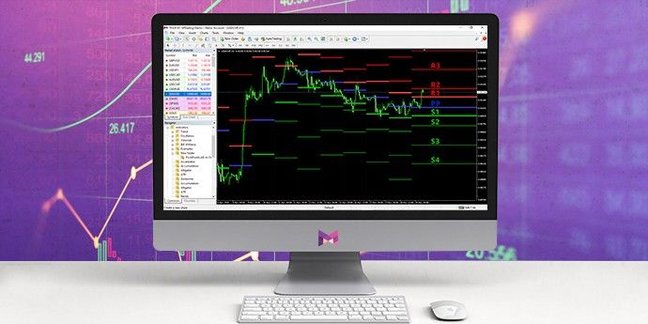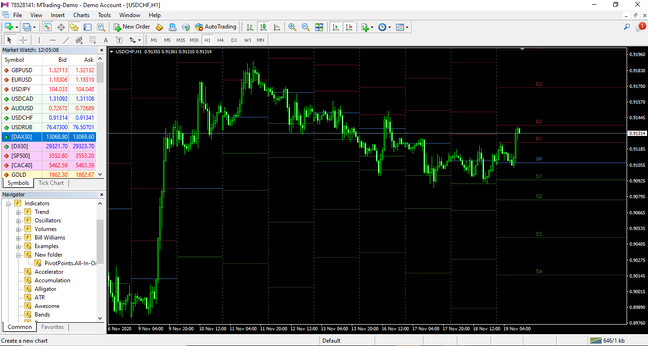How to Use Pivot Point Strategy in Forex Trading
Every trader should know what a pivot point is. It comes as the core element of various baseline strategies when using technical analysis and various trading charts. Generally, people who trade commodities or equity use a pivot point strategy that makes it possible to make accurate support and resistance level predictions. They help to identify potentially successful entry points, traders use pivot point trading rules to set stop-losses or limit orders, and so on.

However, a few beginners understand what a pivot point is and how it can be used under real-market conditions with a specific trading strategy.
Pivot point explained
With so many technical indicators, the pivot point is probably the major one, as it helps to define the future trend or price movement. Besides, it shows the situation on the market with the overbought or oversold environment. What's more, the indicator makes it easy to identify the trend, in addition to support and resistance levels.
Take a look at the pivot point example on MT4 chart (thin horizontal lines):

up to 200%

from 0 pips

Trading platform

Ways to use and interpret Pivot point trading rules
As mentioned earlier, the technical indicator is used to specify and calculate primary support and resistance levels. In other words, you can use it to see the biggest price movement that is about to take place at the given price tag. Of course, pivot points may be used for other types of support and resistance. However, they are not as influential and informative as the primary. On the other hand, they help to spot specific price moves as well.
There are two ways traders can use pivot point trading rules:
- Determining the overall market trend. This way works for both bulls and bears. If you see the price dropping through the indicator, it is the bearish signal. If it breaks the upward movement, it is a bullish signal.
- Determining market entry and exit positions. Let's say you set a limit order to buy 1,000 shares if the price makes a breakthrough and passes the resistance level. At the same time, you can set a stop-loss located next to the support level.
As you can see, pivot point trading rules make it easy to make accurate predictions using support and resistance. On the other hand, sometimes levels may have no sense of impact. What we are trying to say is that you are not supposed to rely only on the technical indicator. It should be used along with other tools and trading instruments integrated into a comprehensive trading approach.
The best idea is to use pivot points along with other technical indicators such as MACD, moving averages, candlesticks, and some others.
Here you can choose an MT4 trading platform for your device and quickly install it for free. The only thing needed is a simple registration form. MetaTrader 4 allows installing indicators and plugins, and offers a version that doesn't require installation.
Using Pivot point trading rules on the Forex market
Experienced traders tend to use technical indicators, oscillators, and fundamentals together with pivot points to ensure better decision making when trading Forex. Here are some of the fundamental guidelines and issues you might need to know before entering the Forex market:
- Bullish Bias – when the asset price is above the pivot point;
- Bearish Bias – when the asset price is below the pivot point.
- The longer period for the pivot point you use, the more dependable the indicator considering the fact that the data set will also increase in the long run;
- Pivot points use support and resistance as extensions that may also serve as key price levels when determining the move.
Types of Pivot point trading strategies
Technical indicators can fit different trading techniques depending on your style. We will review the two major pivot point trading strategies. They are as follows:
- Swing Trading – this one applies to those who opt for medium and long-term trades. If you decide to use pivot points, you will need to take into account weekly or monthly periods.
- Breakout Trading – it works for traders looking for timeframes with higher volatility. They wait for huge moves as well as price reversal.
The bottom line
Using pivot points strategy provides a solid handicap when using support and resistance levels. The indicator can be used in several ways no matter if you consider yourself a bull or bear. Simple calculations make it easy to follow the trend and identify market conditions to set a limit order, stop losses, or define market entry and exit positions. To make the most of the strategy, you should use them with other indicators and tools.
This material does not contain and should not be construed as containing investment advice, investment recommendations, an offer of or solicitation for any transactions in financial instruments. Before making any investment decisions, you should seek advice from independent financial advisors to ensure you understand the risks.
